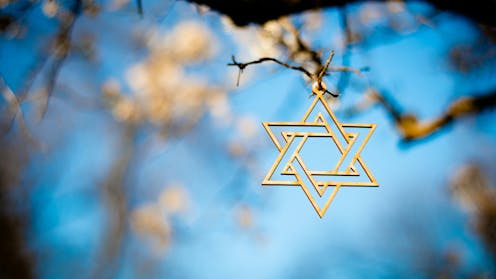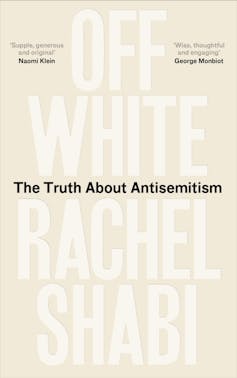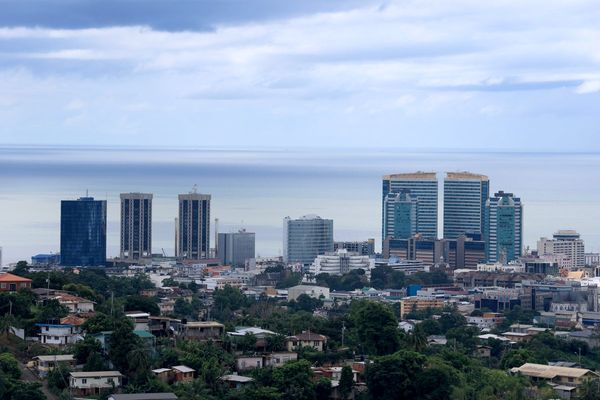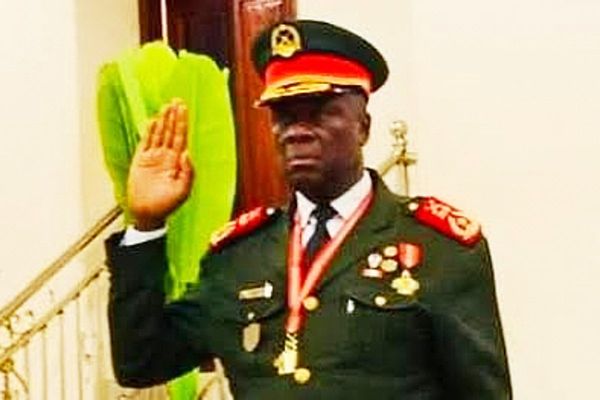
It should not be difficult to define antisemitism. The torching of a synagogue in Melbourne last month. Unfurling a flag with a Nazi swastika near the Sydney Jewish Museum in February. Too many recent examples are clearly antisemitic (though the lawyer of the man who unfurled the Nazi flag said his client doesn’t hold antisemitic views).
The real difficulty, when it comes to defining antisemitism, is in the connection between Jewish people and the state of Israel. Many Jews regard calls such as “from the river to the sea”, which implies an end to the current Israeli state, as antisemitic. But hardline Israelis (some of whom sit in its government) believe all of what they define as Judea and Samaria (now the West Bank) should be part of one Jewish state. Are they just as culpable of racism?
Review: Off White: The Truth About Antisemitism – Rachel Shabi (Oneworld)
Jewish political journalist Rachel Shabi, who has reported on the Israel–Palestine conflict from the region, brings a welcome sophistication to these questions. In part, this is because of her complex identity. Born in Israel and raised in Britain, she has “the features of light-skinned Iraqi-Jewish parents”. She calls herself “white presenting” – and explains (European) Jewish people have, historically, only been “absorbed into whiteness” relatively recently; it “feels contingent” and “hard to trust”.
At the same time, she reminds us Israel’s Jewish population does not resemble the image we may have, of European (Ashkenazi) Jews in Bondi or East Caulfield. The largest Jewish ethnic group in Israel, 40-45% of the population, are Mizrahi, from Jewish communities in the Middle East (including Israel itself). Shabi describes them as a “disadvantaged minority”, deemed inferior (“perjoratively, ‘Black’”) in a country that “desperately wanted to be European”. By contrast, 32% of Israelis are Ashkenazi.
I wish she had written more about the 20-25% of Israel’s population who are non-Jewish Arab Israelis, and the relations between them and Jews whose families came from countries such as Iraq and Syria.
What is antisemitism?
For many secular Jews, who feel no particular affinity with Israel, rising antisemitism since October 7, 2023 has underlined the reality that our Jewishness is not a matter of individual choice. (It is important to note Islamophobia has risen in that time, as well.)
The antisemitism strategy recently presented by Jillian Segal, Australia’s antisemitism special envoy, has been criticised for many reasons. Among them is its conflation of criticising Israel with anti-Jewish prejudice, using the International Holocaust Remembrance Alliance (IHRA) definition of antisemitism as a yardstick.
Many governments, including ours, use this definition. Some scholars and activists believe it mutes legitimate discussion about Israeli state violence towards Palestinians. Seven of its 11 examples are “at least partially related to the state of Israel”.
Ironically, while calling Australia a racist state is regarded as fair comment, to term Israel racist would be a breach of the IHRA guidelines. It could lead to disciplinary action under Segal’s recommendations.
Not straightforward ‘settler colonialism’
Shabi is particularly attuned to the simplification of regarding Israel as just another example of settler colonialism. The tragedy of Israel’s formation, she writes, is that Palestinians were displaced because European societies wanted to eradicate their Jewish inhabitants.
Shabi is very critical of Australian historian Patrick Wolfe’s claim that Israel is a settler society in the same way as Australia or the United States. She prefers the more nuanced view of the Palestinian intellectual Edward Said, who described Palestinians as “victims of victims, the refugees of the refugees”.
Zionism, she writes, was envisaged as a way out of the “endless cycles of violence” in Europe, where antisemitism “kept on escalating”. After the second world war, when two thirds of Europe’s Jewish population were killed, few countries were willing to welcome survivors in the numbers needed.
The Christian West, she argues, was “a third party” in the creation of Israel, its role often “too big to be seen”.
This more complex reading of Zionism helps explain why some Indigenous Australians remain strong supporters of Israel, aware of the strong support some Jewish Australians have expressed for recognition of Indigenous claims. Shabi correctly points out that for most diaspora Jews, Zionism is part of their identity – even if they are deeply critical of the current Israeli state and sympathetic to the Palestinian cause.
One UK interviewee told her:
After the second world war, Jewish communities worldwide built Israel as a primary locus of identity, a supplement to congregational religious practices […] it has been like that for over seventy-five years now.
Shabi writes as someone on the left who has encountered the unwillingness of people who share her political outlook to recognise the reality of antisemitism. Undoubtedly, it has become more prevalent and toxic over the past decade. “But too often,” she writes, “protesting against the clear weaponisation of antisemitism has bled into a posture of indifference about antisemitism at best, and outright denials of it at worst”.
The book emerged from her own struggle to explain why leftists, who are outraged by all other displays of racism, have found it difficult to come to terms with the need to call out antisemitism. While the left have “ceded the space”, the right have “smartly and strategically filled that void”. That, she says, is “putting people off” – and leaving many Jewish people on the left without a language to talk about it.
Her crucial insight is that Jews are simultaneously seen as privileged and victims. In many conspiratorial views of the world, they are responsible for the excesses of both capitalism and communism.
History’s scapegoats
For most of the history of Western Christianity, Jews were seen as responsible for the death of Christ: useful when they could become moneylenders and bankers, expendable when a scapegoat was needed. It was only in 1965 that the Catholic Church officially declared Jews free of the crime of deicide (the killing of a god – in this case, Jesus Christ).
Jews, then, have always had an ambiguous place in the racial hierarchy that invented white supremacy, as the history of our prestigious men’s clubs – or America’s Ivy League universities – should remind us. As Hannah Arendt pointed out of European salons almost 70 years ago: “Only one’s Jewishness (or homosexuality) had opened the doors of the exclusive salons, while at the same time they made one’s position extremely insecure.”
Nor should we overlook the rise of neo-Nazi ideology over the past decade, which seems to be largely forgotten in the current right-wing concern for antisemitism.
Today, antisemitism is inextricably bound up with attitudes towards Israel. Shabi is careful to draw distinctions, which are too often blurred by both defenders and opponents of Israel. As the spokesperson for a UK charity that monitors antisemitism told her:
Chanting “Free Palestine” at a demonstration is clearly about Israel. It is not the same as phoning a synagogue to deliver the message […] or shouting it at passers-by presumed to be Jewish.
Many of Israel’s most ardent defenders are also antisemitic, including groups who have loudly supported Donald Trump. This is hardly surprising: Israel has defined itself as an ethnonationalist state, which appeals to leaders such as Hungary’s Viktor Orban or India’s Narendra Modi, who also believe in ethnic superiority.
Shabi provides a considerable analysis of the phenomenon of Christian Zionism, which is as central to American support for Israel as the well-organised Jewish Zionist lobby. This may be the section of her book that will be most unknown to Australian readers. It is an important insight into the strength of American support for Israel.

A perfect example is the current US Ambassador to Israel, former Arkansas governor Mike Huckabee. He is on record denying the existence of Palestinians and supporting Israeli settlements on the West Bank, generally regarded as illegal under international law.
Shabi is correct in pointing to the far right as responsible for “the most virulent form of antisemitism today”. That virulence has included attacks on Jewish people and institutions in the US (where it has resulted in multiple deaths) and in France.
But Shabi tends to underestimate the ways the current carnage in Gaza is creating new forms of antisemitism. This is, in large part, due to the Israeli government’s insistence that criticism of their actions is antisemitic – and to the willingness of some diasporic Jews to echo every position taken by Israel.
Because her focus is almost entirely on the US and UK, with some discussion of Hungary, she does not discuss the ways antisemitism exists in countries which have never had a significant Jewish population, yet are susceptible to antisemitic tropes. This is the case in both Japan and Malaysia.
Confronting racism
This plays out in the current Australian debate. A close examination of allegations of widespread antisemitism shows while some are valid, many others are clearly expressions of support for Palestinians, not attacks or slurs on Jewish people. For example, the three actors who wore a keffiyeh during a curtain call at the Sydney Theatre Company in November 2023 (the month after the October 7 attacks and subsequent war on Gaza) were expressing support for Palestinians, not hatred of Jews.
Crucially, Shabi makes the case for why we need to approach antisemitism within a broader framework of confronting racism. Close examination of white nationalist rhetoric reveals it is often equally antisemitic. So is the language of “the great replacement”: the imagined fear of a deliberate plot to swamp Western countries with non-white, non-Christian immigrants, originating in the French right.
Shabi writes:
The deadly violence perpetrated in Europe against Jews does not exonerate Israel for its violent treatment of Palestinians. It is no justification […] But it does bring us into a wider understanding of the forces of racism and imperialism impacting this particular conflict.
Imagine how powerful Jillian Segal’s antisemitism strategy could have been if it had acknowledged the pain of Palestinian Australians (and the indignities faced by Indigenous and African Australians) in her recommendations for action.
Rachel Shabi will be visiting Australia this month. Maybe someone could arrange for her to meet with Segal – to persuade her to contribute to genuine healing, rather than communal pleading.
Rachel Shabi will appear at Palace Cinemas Moore Park in Sydney on August 17 and at the Wheeler Centre in Melbourne on August 19.
Dennis Altman is affiliated with the Jewish Council of Australia
This article was originally published on The Conversation. Read the original article.







